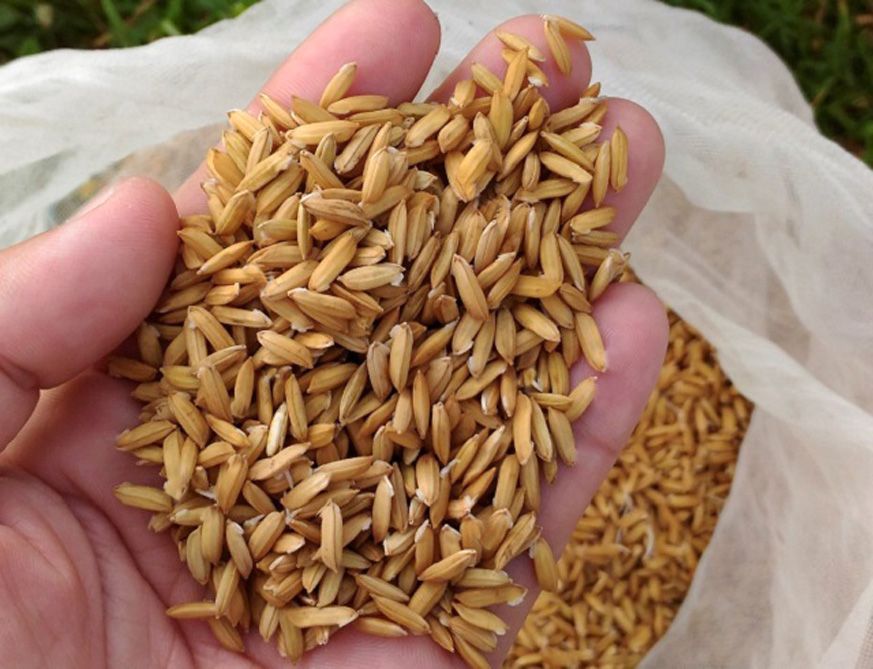
The Department of Agriculture (DA) will distribute seeds and fertilizers for free to rice farmers starting the 2020 wet cropping season to further boost the country’s rice production.
Agriculture Secretary William Dar said the full implementation of the P8.5-billion Rice Resiliency Project (RRP) under the Plant, Plant, Plant Program in 16 rice-producing regions in the country, will start this month.
“Achieving high productivity in rice entails an integrated system of crop management. The fastest-moving interventions that could provide quick results are the use of quality seeds and appropriate fertilizers. Hence, the RRP will provide said farm inputs to participating farmers,” Secretary Dar said.
Agriculture Assistant Secretary for Operations Andrew Villacorta said the DA will distribute inbred and hybrid rice seeds with fertilizers to both rainfed and irrigated areas, on top of the existing Rice Competitiveness Enhancement Fund (RCEF), and support to inbred and hybrid farmers under the National Rice Program (NRP).
“We categorized the project into three components to complement the programs that we currently have in place for rice. These sub-projects will ensure farmers’ access to quality seeds and fertilizers,” Villacorta said.
“First, is the RCEF-Enhanced that will provide fertilizers to the 947 targeted cities/municipalities to complement the distribution of inbred seeds under the RCEF seed component by the DA-Philippine Rice Research Institute.
“Second is the Expanded Inbred Rice Production or an expanded inbred certified seed distribution, coupled with fertilizers, to enhance production in areas not covered by RCEF seed component but within RCEF and non-RCEF provinces. The fertilizer support will also cover farmers who use good or home-saved seeds.
“Lastly, the Expanded Hybrid Rice Production in suitable areas will distribute hybrid rice seeds and fertilizers. This will include fertilizer support for farmer-recipients of hybrid seeds funded under the National Rice Program 2020 allocation for the wet season cropping,” Villacorta said.
In sum, the RRP farmer-recipients will receive seeds according to the size of their farmland, and fertilizers, at two bags per hectare (ha) for inbred and three bags/ha for hybrid areas.
If the farmer’s total area exceeds the maximum 3-hectare coverage under RCEF, the excess areas may be covered under the RRP, Villacorta added.
Under the RRP, the DA aims to produce an increment of more than 1.03 million metric tons (MMT) of rice, in addition to this year’s yield projection of 12.76 MMT.
“In all, we expect a total yield of 13.79 MMT of rice, bringing up our adequacy level from 87 percent to 94 percent. Every peso of investment in this project is worth for the noble purpose of ensuring enough food for all Filipinos during the Covid-19 pandemic and beyond,” Secretary Dar said.
The DA regional field offices, in coordination with the offices of the Provincial Agriculturist and the City/Municipal Agriculturist (C/MAO), will spearhead the distribution of seeds and fertilizers, adhering to the quarantine and physical distancing protocols.
The RRP will only distribute seeds that are National Seed Industry Council (NSIC)-registered. The previously selected RCEF areas will serve as a guide to cover other areas that have yet to be reached.
“Our main idea here is to expand production areas to eventually increase the volume of output. This is something that we critically need to combat the threat of hunger amid the ‘new normal’ in global food production,” Dar concluded.
The DA reiterates its call for farmers to register in the Registry System for the Basic Sectors in Agriculture (RSBSA) through their C/MAO to benefit from the programs of the agri-fishery sector. ### (Myriam Layaoen, DA StratComms)













